Unlike the relatively solitary Clavulina rugosa we presented yesterday, Ramaria myceliosa is quite a gregarious species. We found this fungus close to the end of our hike, not too far from the creek edge, hiding in the shade of a giant fallen Douglas fir (Pseudotsuga menziesii). We wouldn’t have even found this fungus, except initially we thought it might be easier to get by the fallen fir by scrabbling underneath it, rather than climbing over the top. As soon as we peered under the tree, we found a veritable forest of Ramaria, sprawling along ground.
Ramaria myceliosa is apparently quite common in Santa Cruz County. Ramarias are classified as coral fungi, and in fact they do look as though they’d be more at home in the ocean than on the forest floor.
Ramarias get their name from the Latin ramus, meaning branch. An important identifying feature of this species of Ramaria is that it abruptly and profusely branches from a slender stem.
On average, this species is described as between 2-6 cm high and broad. The branches are slender, spreading, and the branching habit is less parallel than its cousin Ramaria stricta. Branch color may be honey to chamois, yellowish, olive-ochre, cinnamon-buff, or even dull orange with age. Ramaria myceliosa has a slender, pliant, and not very fleshy stem, and typically the stem is the same color as the branches, or paler, with abundant white mycelial threads attached to the base and permeating the surrounding leaf litter. The finely branched tips are at first paler than the main branches, later concolorous, or olivaceous with age.
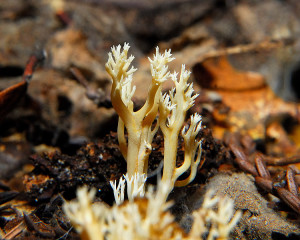
As seen in the foreground, new growth is pale, and the tips of this species are initially more pale than the branches in young specimens
This species is usually scattered densely in duff under conifers, and only known to grow on the west coast of North America. Ramaria myceliosa may be abundant under redwood in the fall, winter and early spring. This Ramaria does not grow on wood like some Ramaria species, nor does it obtain the green-blue coloration seen in an otherwise similar species, Ramaria abietina.
Tomorrow, somewhat in keeping with an underwater theme, we’ll move on from coral, to jelly fungus!

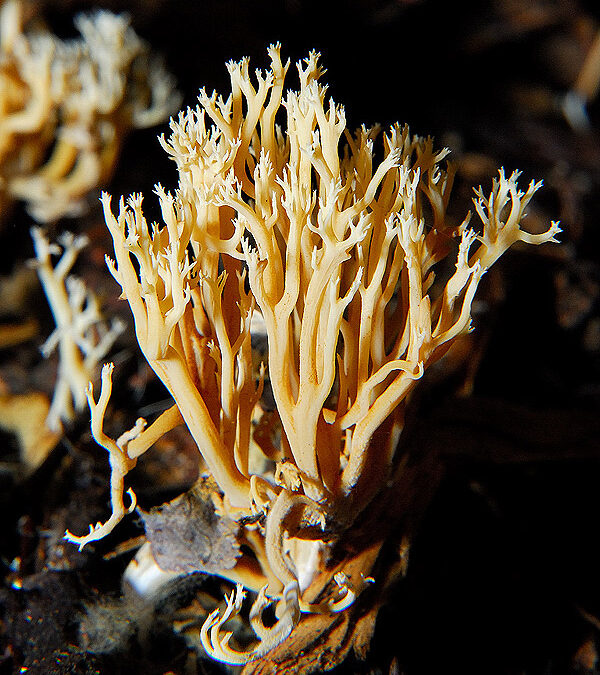
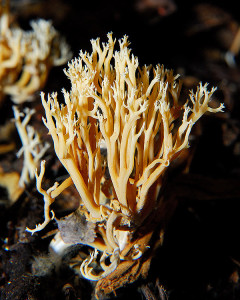
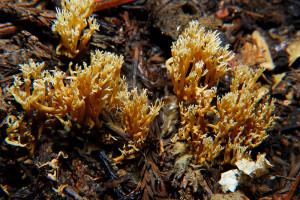
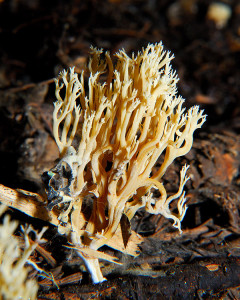
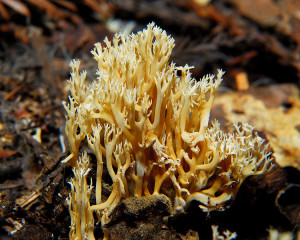







These mushrooms are getting weirder by the day. This one looks hungry. Glad there is a computer between us.
Aren’t they remarkable? All too often I think we just envision wild mushrooms as having a typical stalk with a round or pointed cap. Until I really took my camera mushroom-hunting, even I hadn’t appreciated the amazingly diverse morphology of fungi. I’ve seen all these different varieties without even having to leave the property!
Mushroom week here at Curbstone Valley is really fascinating. Thanks for all the info. This one is really beautiful. I just found two mushrooms in my little yard growing in the mulch, but they’ve got nothing on these guys.
Ramaria do look like they belong in the ocean! Don’t you love the diversity of the plant world? And how many people take time to notice? Thanks for calling attention to these fascinating fungi.
Like the previous one, this fungi does look like something you would find growing under ocean. Thank you for showing us this different view of the plant world.
It does look like a coral!
Jelly fungus?! I’m on the edge of my seat!